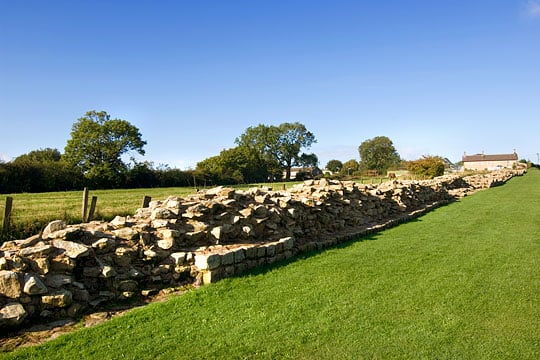Significance of Heddon-on-the-Wall
The remains at Heddon form one of the most impressive lengths of Hadrian’s Wall visible to the east of its central sector. They are also a reminder of the archaeological importance of the Wall in the lowland areas, which have always been more densely occupied than the uplands.

Survival
As well as being a fine surviving stretch of Wall, this fragment is the longest and best preserved of all those so far excavated which were built to broad gauge, the original specification for Hadrian’s Wall.
Hadrian’s Wall in the Lowlands
The Wall at Heddon shows that some lengths of Hadrian’s Wall can survive in lowland areas in as good a state as in the central sector.
Although the Wall in the lowland areas was used as a ready source of stone from the late 7th century onwards, much of significance survives. This is the case even when stone has been removed down to the foundations, for example, collapsed masonry on either side of the Wall, evidence of construction levels, and evidence of cultivation or even settlements preceding the building work.
Later Use of the Wall
The late medieval or post-medieval corn-drying kiln built into the core of the Wall is an unusual example of the ways in which later inhabitants put the ruins to use.
READ MORE ABOUT HEDDON-ON-THE-WALL